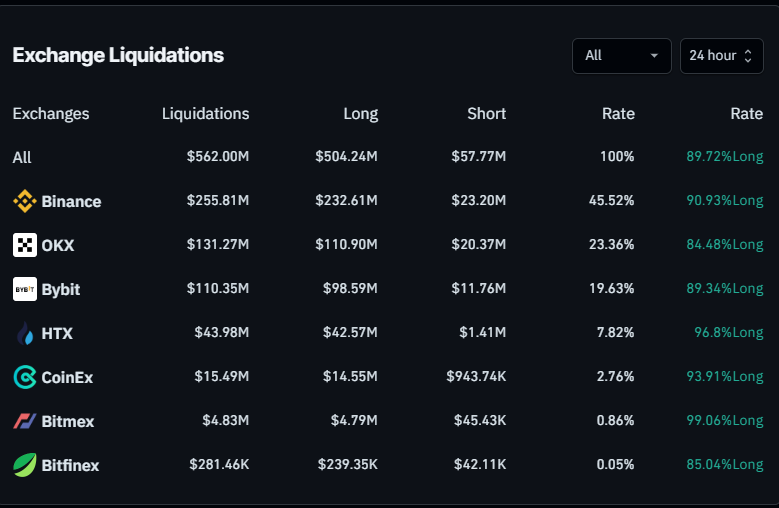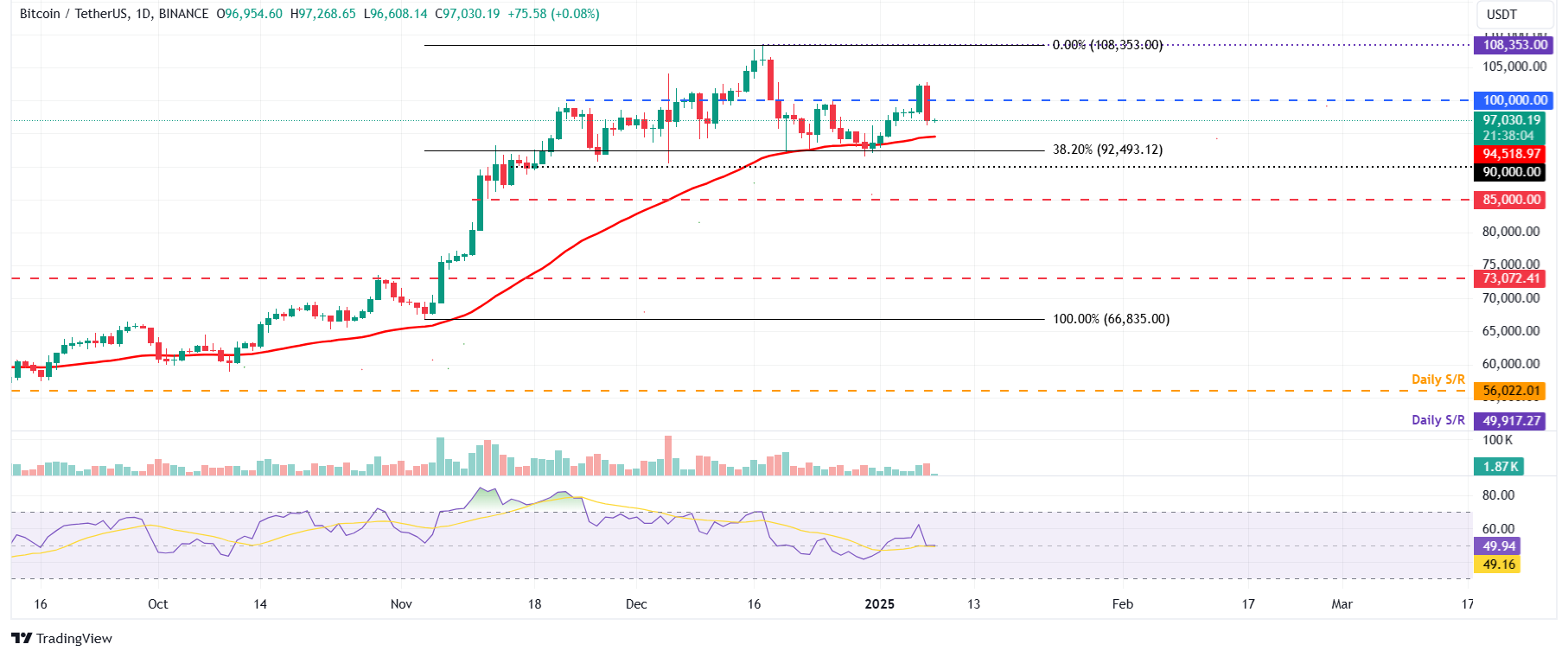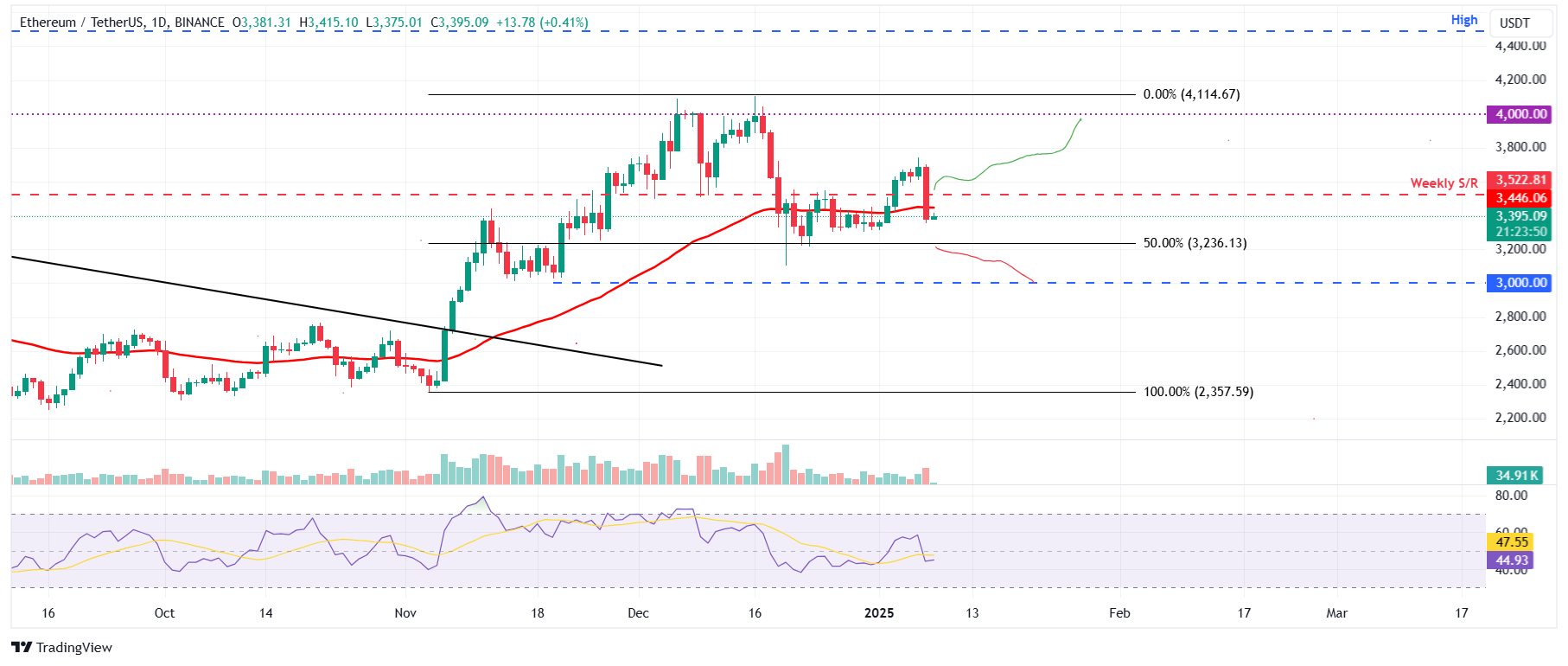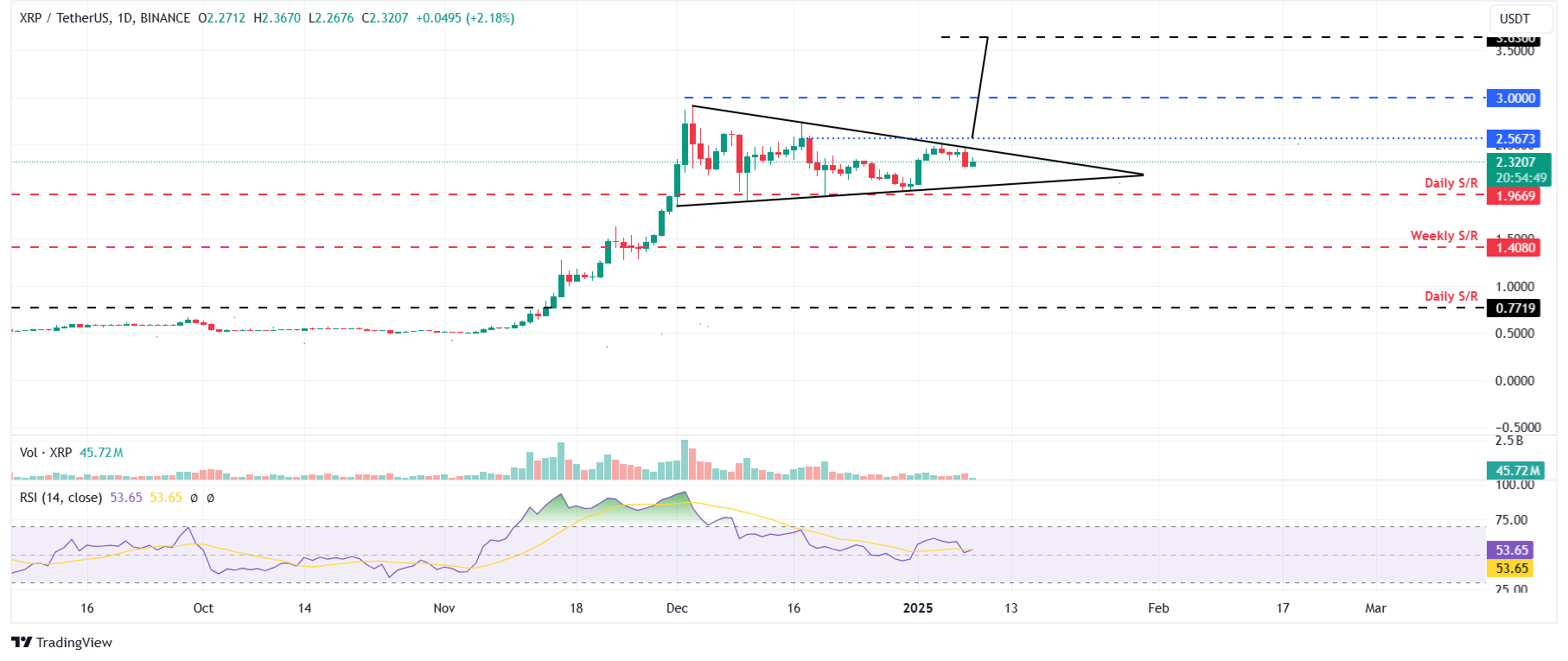Top 3 Price Prediction Bitcoin, Ethereum, Ripple: Over $560 million in liquidation
- Bitcoin price hovers around $97,000 on Wednesday after declining more than 5% the previous day.
- Ethereum price closes below the 50-day EMA support level at $3,446, indicating a pullback on the horizon.
- Ripple price could rally if it breaks above the upper symmetrical triangle boundary.
Bitcoin (BTC) hovers around $97,000 on Wednesday after declining more than 5% the previous day. Ethereum (ETH) and Ripple (XRP) follow in BTC’s footsteps and decline 8.3% and 6.15% respectively. This recent pullback has triggered a wave of liquidations, resulting in over $560 million in total liquidations in the crypto, according to data from CoinGlass.

Total Liquidations chart. Source: Coinglass
Bitcoin price closes below the $100K level
Bitcoin price declined 5.17% on Tuesday and closed below the $100,000 support level. At the time of writing on Wednesday, it hovers around $97,000.
If BTC continues its pullback, it could extend the decline to test its 38.2% Fibonacci retracement level at $92,493 (drawn from the November 4 low of $66,835 to the December 17 high of $108,353).
The Relative Strength Index on the daily chart read 49, hovering around its neutral level of 50, indicating indecisiveness among the traders. If the RSI closes below the neutral level, it will give rise to bearish momentum, which could lead to a sharp fall in Bitcoin’s price.

BTC/USDT daily chart
However, if BTC recovers and closes above the $100,000 level, it could extend the rally to retest its December 17, 2024, all-time high of $108,353.
Ethereum price closes below its 50-day EMA
Ethereum price declined 8.3% and closed below the 50-day EMA at $3,446 on Tuesday. At the time of writing on Wednesday, it hovers around $3,395.
If ETH continues its correction and closes below the $3,236 support level, it could extend the decline to retest its psychological importance level of $3,000.
The RSI on the daily chart reads 44, below its neutral level of 50, indicating bearish momentum.

ETH/USDT daily chart
Conversely, if ETH recovers, breaks above the $3,236 and closes above the $3,522 weekly resistance level, it could extend the rise to retest its psychological importance level of $4,000.
Ripple could rally if it breaks above the symmetrical triangle
Ripple price trades inside a symmetrical triangle, a technical pattern formed by connecting multiple highs and lows with two converging trendlines (from early December to early January). This technical pattern has a bullish bias, and the target is generally obtained by measuring the distance between the first swing high and the first swing low to the breakout point.
On Tuesday, XRP faced rejection from the upper trendline of the symmetrical triangle and declined by 6.15%. At the time of writing on Wednesday, it recovers slightly and trades around $2.32.
Assuming the breakout happens by closing a daily candlestick above the daily resistance level at $2.56, the technical target obtained by this pattern would be $3.63. Investors should be cautious of this theoretical move as it could face a slowdown after a 17% rally to retest Ripple’s psychological importance level of $3.00 as traders could opt to book profits.
The RSI indicator reads 53, above its neutral value of 50, indicating a rise in bullish momentum.

XRP/USDT daily chart
However, if XRP closes below the $1.96 daily support level, it would extend the decline to retest its next support level at $1.40.
Bitcoin, altcoins, stablecoins FAQs
Bitcoin is the largest cryptocurrency by market capitalization, a virtual currency designed to serve as money. This form of payment cannot be controlled by any one person, group, or entity, which eliminates the need for third-party participation during financial transactions.
Altcoins are any cryptocurrency apart from Bitcoin, but some also regard Ethereum as a non-altcoin because it is from these two cryptocurrencies that forking happens. If this is true, then Litecoin is the first altcoin, forked from the Bitcoin protocol and, therefore, an “improved” version of it.
Stablecoins are cryptocurrencies designed to have a stable price, with their value backed by a reserve of the asset it represents. To achieve this, the value of any one stablecoin is pegged to a commodity or financial instrument, such as the US Dollar (USD), with its supply regulated by an algorithm or demand. The main goal of stablecoins is to provide an on/off-ramp for investors willing to trade and invest in cryptocurrencies. Stablecoins also allow investors to store value since cryptocurrencies, in general, are subject to volatility.
Bitcoin dominance is the ratio of Bitcoin's market capitalization to the total market capitalization of all cryptocurrencies combined. It provides a clear picture of Bitcoin’s interest among investors. A high BTC dominance typically happens before and during a bull run, in which investors resort to investing in relatively stable and high market capitalization cryptocurrency like Bitcoin. A drop in BTC dominance usually means that investors are moving their capital and/or profits to altcoins in a quest for higher returns, which usually triggers an explosion of altcoin rallies.



